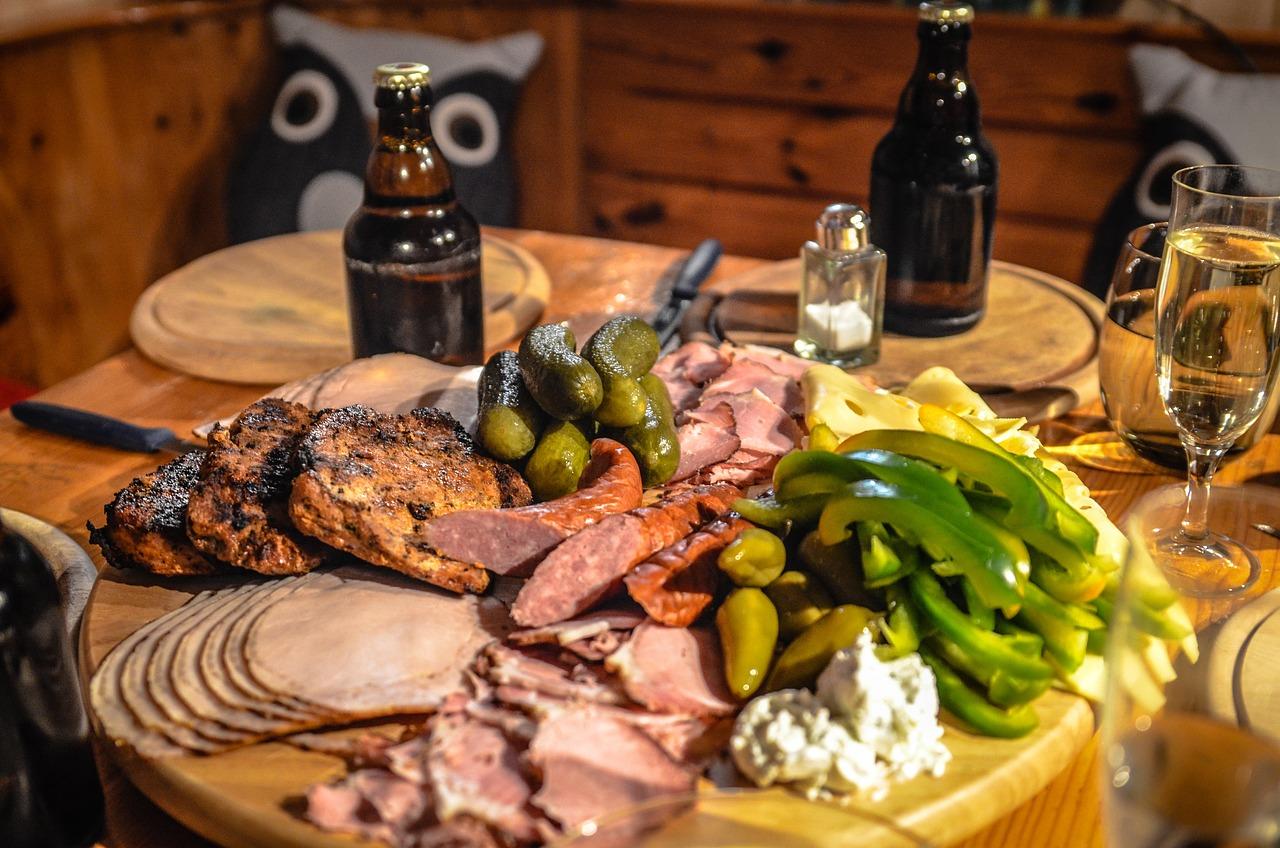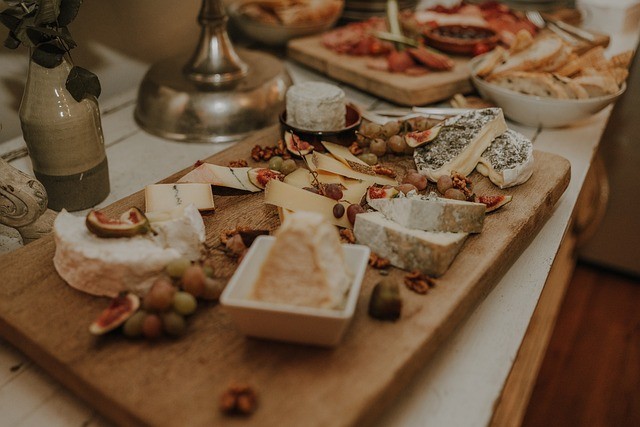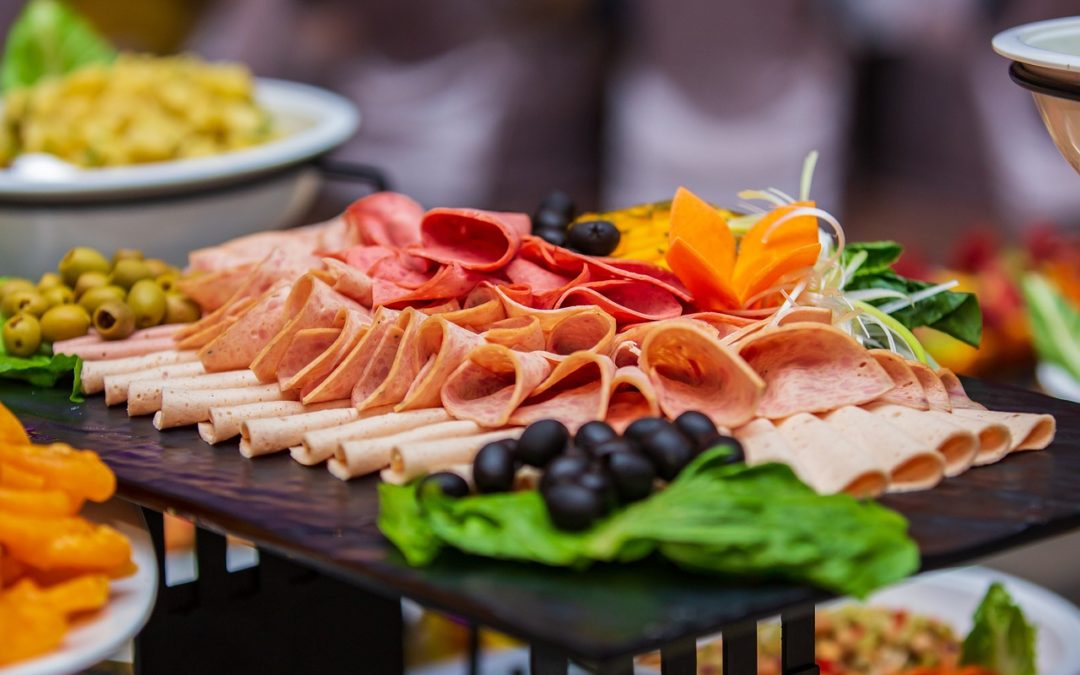A charcuterie board is a selection of cured meats, cheeses and other accompaniments served on a platter or board. The key to a successful charcuterie board is to include a variety of flavors and textures and to arrange the items aesthetically on the platter or board.
Here are some ideas for dishes and serving boards that can help you create a beautiful charcuterie spread:
- Antipasto platter: An antipasto platter is a type of charcuterie board that typically includes cured meats, cheeses, olives, pickled vegetables, and bread or crackers. You can arrange these items on a large platter or tray, and add fresh herbs or edible flowers for an added touch of color and flavor.
- Cheese board: A cheese board is a type of charcuterie board that focuses on a selection of cheeses, often paired with bread or crackers and a variety of accompaniments, such as fruit, nuts, and spreads. You can use a wooden cutting board or a large marble slab as a base for your cheese board.
- Charcuterie board with a theme: You can also create a charcuterie board with a specific theme in mind, such as a Mediterranean- or French-inspired board. For a Mediterranean-themed board, you might include olives, hummus, pita bread, and feta cheese, in addition to cured meats like prosciutto and salami. For a French-inspired board, you might include baguette slices, pâté, and Brie cheese, along with grapes and figs.
- Charcuterie board with a selection of meats: If you want to focus on cured meats, you can create a charcuterie board with a selection of different meats, such as salami, prosciutto, and chorizo. You can also include mustards, pickled vegetables and bread or crackers as accompaniments.

- Charcuterie board with a selection of cheeses: If you want to focus on cheeses, you can create a charcuterie board with a variety of different types of cheese, such as soft cheese, hard cheese and blue cheese. You can also include fruit, nuts, and spreads as accompaniments.
- Bread or crackers: These can be used to spread cheese or as a vehicle for the cured meats.
- Fruits and vegetables: Fresh fruit, such as grapes or apples, and vegetables, such as pickles or olives, can add flavor and contrast to the cured meats and cheeses.
- Nuts: A selection of nuts, such as almonds or cashews, can add crunch and flavor to the charcuterie board.
- Spreads: Condiments such as mustard, tapenade, or honey can add flavor and depth to the charcuterie board.
- Pickled items: Pickled items such as cornichons or pickled onions, can add a tangy and acidic element to the charcuterie board.
- Dried fruit: Dried fruit, such as apricots or figs, can add sweetness and texture to the charcuterie board.
There are many options for serving charcuterie other than a cutting board or marble slab. Here are a few ideas:
- Platter or tray: You can use a large platter or tray to serve your charcuterie. A wooden or ceramic platter can be a good option, as it provides a rustic, natural look.

- Slate board: A slate board is a type of serving board made of natural slate, which can give your charcuterie a sophisticated, modern look. You can also use chalk to write the names of the items on the board.
- Bamboo board: A bamboo board can be a more eco-friendly option for serving charcuterie, and it can also provide a natural, rustic look.
- Acrylic board: An acrylic board, such as a clear acrylic tray or platter, can provide a modern, minimalist look. You can also use colored acrylic boards to add a pop of color to your charcuterie spread.
- Serving bowl: If you want to serve your charcuterie in a more casual way, you can use a large serving bowl or basket to hold the items. This can be a good option if you are serving the charcuterie as part of a buffet or party.




